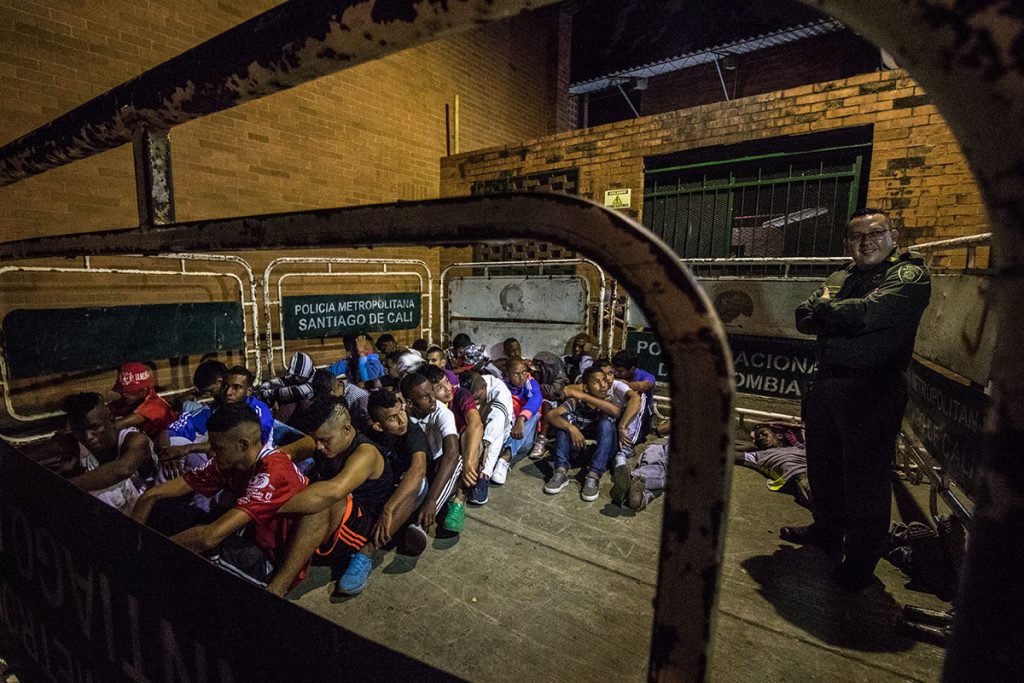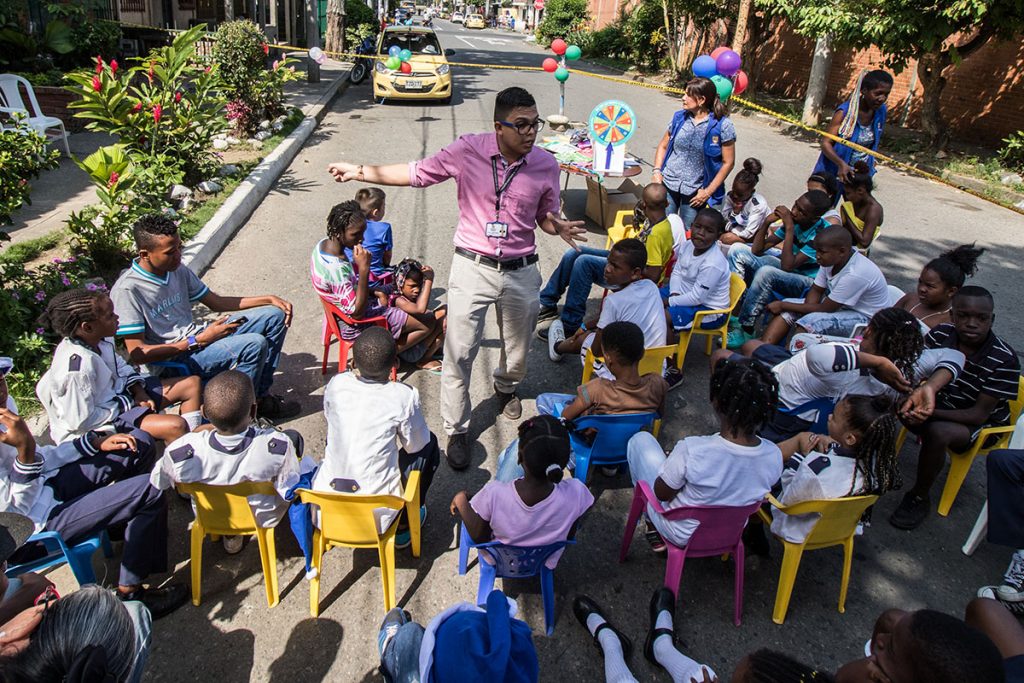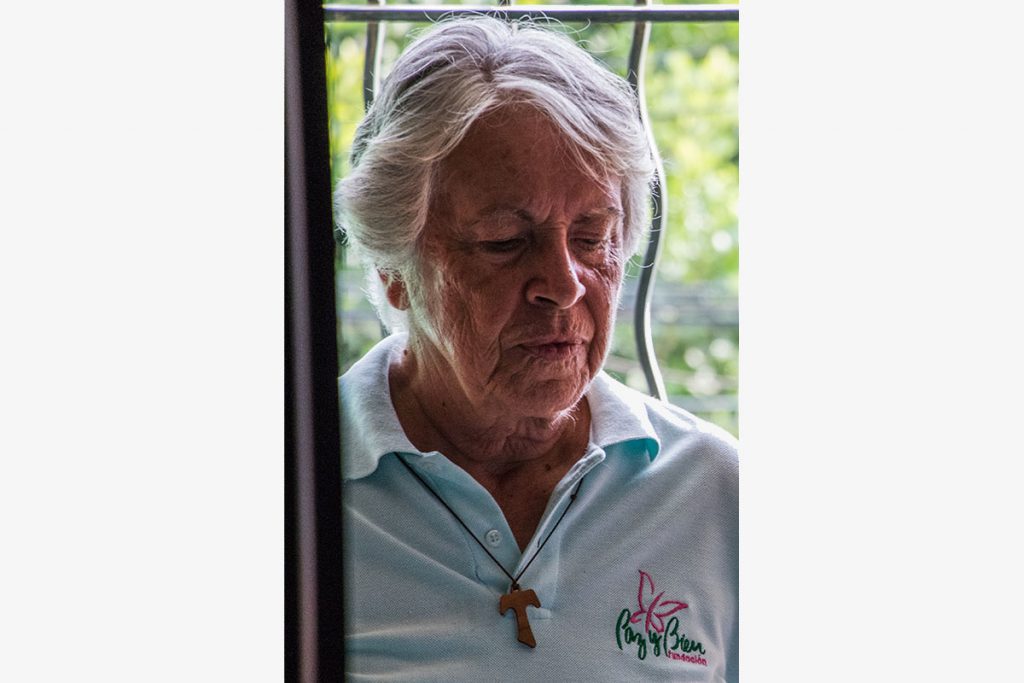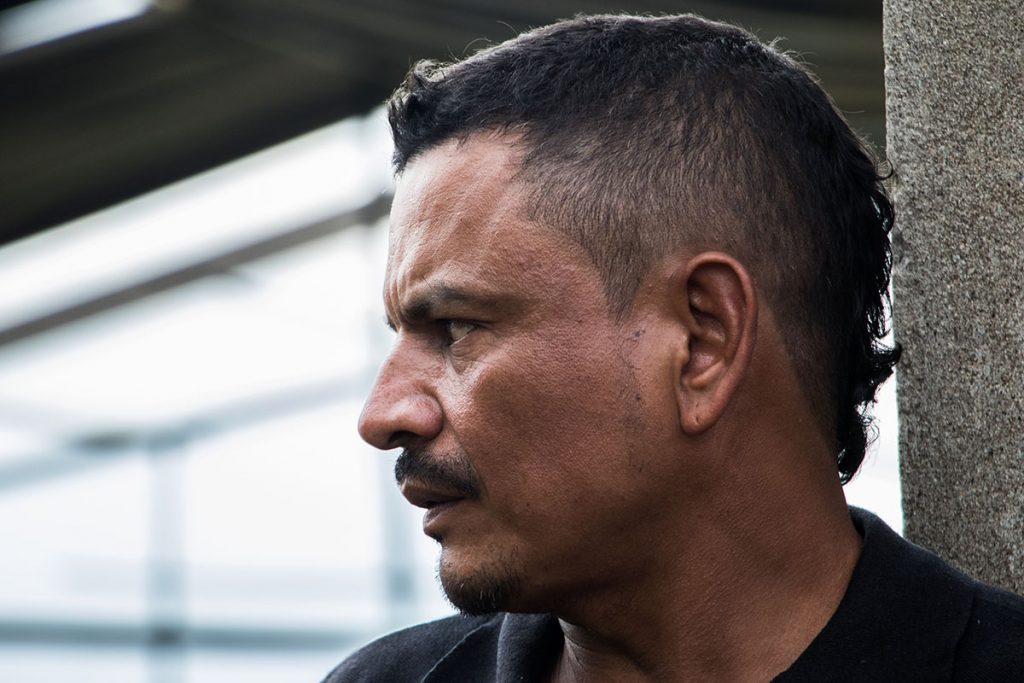By Stefan Labbé, Cherise Seucharan and Alexander Villegas
Rubiel Idarraga expects an ambush. To avoid it, he rarely travels at night, varies his route to work, and often checks in with his neighbours to make sure nobody is watching his house. As a construction worker in Cali, Colombia, his fear might seem unfounded – except that he says people have already tried to murder him for his past crimes.
Idarraga is one of around 1,400 former Farc guerrillas who left it behind for a civilian existence in Cali. After the landmark peace accord between the government and the Farc in 2016, he is set to be joined by potentially thousands more, who have disarmed and are waiting in temporary camps.
Now, after a lifetime of fighting in the mountains and jungles of Colombia, guerrillas like Idarraga face a new challenge: surviving the city.
Retribution is a real issue. According to the Colombian Agency for Reintegration, one in 10 reported cases of violence against demobilised fighters involves homicide or attempted homicide.
Cali is already Colombia’s most violent urban centre, and is expected to receive up to a quarter of all former Farc combatants – a volatile addition to a city where criminal gangs already run rampant. While the peace accord promised each former guerrilla $6,100 for the first two years to help them start anew, large gangs such as the Urabenos have been reportedly offering triple that amount in some areas.
Idarraga says the temptation to take up a life of crime is very real for people like him who are barely making ends meet through legal employment. He spent over a decade fighting for the Farc, eventually becoming an explosives expert who commanded up to 54 guerrillas. But after the birth of his son nine years ago, he left the war for good, and now picks up local construction jobs when he can.
“My son’s the only thing I have,” says Idarraga. “He’s why I work, he’s why I fight, he’s the main reason I’m here.”
But leaving the Farc and moving into the city means leaving behind a whole network of support, he says.
“It’s different because you haven’t been here a long time and nobody supports you. You have to ‘guerrilla’ on your own.”
Since the 2016 deal, thousands of former soldiers have migrated to Cali, while thousands more wait in limbo in the mountains. Many city residents are scared of what comes next.
“We’re not prepared,” says Juana Cataño, a rising rightwing politician and vocal critic of the peace process. She believes the coming wave of migrants will further disrupt the already crime-ridden city.
“It’s throwing them into a jungle worse than the one before – a concrete jungle where, even when you put down roots, the fighting never stops. Everyone fights here.”
Cali is a city shaped by conflict. As the urban hub of south-west Colombia, it has received hundreds of thousands of rural people fleeing drug violence, civil war and natural disasters. Most have settled in shantytowns, creating areas of acute poverty.
Violence peaked in the 1990s, when the Cali and Medellin cartels waged a vicious war for control of global cocaine distribution. By the mid-2000s, violence had dropped as paramilitary groups demobilised. Many fighters splintered into smaller groups, each scrambling for control of the cocaine trade.
By 2009, Cali’s murder rate began to rise again as desperate ex-paramilitaries and vulnerable youth were recruited into criminal life. Security has started to improve again, but Cataño argues the military should be redeployed in the city.
“We have various forces: special forces, military police, the army, the regular police and intelligence,” Cataño says. “Use them!”
That tension is most apparent in Aguablanca, Cali’s poorest and most violent district where many former fighters – including Idarraga – have settled. More than half of the city’s murders happen here. At night, police are out in full force, detaining anyone suspected of criminal activity.
“To this day I’m afraid of showing my ID because priors always show up – rebellion, terrorism,” says Idarraga, who avoids going out in public whenever possible, for fear of getting stopped. “If there’s a shakeup, you’re the first one to go in the truck. ‘Ah you were a guerrilla fighter? Have a kick, have a punch.’”
Jorge Marin, a peace facilitator in Aguablanca, runs a workshop that gets kids to imagine what a guerrilla looks like – a set routine that works every time.
“He has camo, a rifle!” shouts one young boy in response.
“Tattooed! Muscular!” shouts another.
“Like me?” Marin asks. Dressed neatly in a pink button-down shirt, his question sparks some laughter. At the end of every workshop, he confesses that he himself is a former guerrilla – a reveal meant to help break down stereotypes.
Marin spent eight years of his adolescence fighting with the Farc, lured by the promise of a political revolution. But after years of violence he became disillusioned, and when he was 19, Marin saw his opportunity and escaped. After two days without food or sleep, he made it to Cali.
“It was really hard for me when I got here to the city,” Marin says. “I went through a lot of hunger.
“Learning what a stoplight is, getting on a bus … It was really complicated for us to adapt. And it was harder for my friends who never left their rural communities where we were used to living.”
Frustrated by city life, several guerrillas who defected with Marin decided to return to the mountains. Marin stayed, and found a way to survive in Cali with the help of the Colombian Agency for Reintegration (ACR), and with support from community leaders such as Sister Albastella Barreto.
The Franciscan nun has dedicated her life to creating peace among the youth in Cali’s most dangerous district. As violence took hold of Aguablanca in the late 1990s, Barreto sought help from seasoned peacemakers including Desmond Tutu.
By her count, Barreto and her team at Paz y Bien (Peace and Wellbeing), a local group, have helped to reintegrate more than 2,000 armed youth in Aguablanca. In 2015, the ACR approached her to expand the reconciliation workshops to former combatants.
As the government and the Farc negotiated in Havana, Barreto brought together 40 displaced civilians and 40 demobilised guerrillas living in Aguablanca to start building peace on the ground. At first, many of the civilians expressed resentment towards the exguerrillas sitting next to them. But with the help of Marin, Barreto used the principles of restorative justice to engage the offender with the victim, and in the process offered a sense of healing that extends into the community.
“We help them get into the community,” says Barreto. “To overcome that difference that they feel because they are ex-combatants.”
Marin’s work is contingent on forgiveness. He says if he had been put in jail instead of offered an opportunity to work in the community, he would have continued a life of violence in Cali.
But as they take on the work of building peace in Aguablanca, Marin and Barreto are also contending with another persistent issue in Colombia: the ongoing cocaine trade.
“The peace accords represent the end of the conflict in some areas and with some groups,” says Barreto. “There are still other groups taking up arms. There’s the entire enormous army of criminal bands that reproduces itself.”
For Marin, militarising the city will do more harm than good. After a childhood of violence, he has learned that making a community safe is about more than using force.
“It’s not about bringing a truckload of police to the neighbourhood,” says Marin. “It’s about bringing a truckload of men and women willing to work together with kids, youths and adults tomorrow.”
Now and again, Idarraga hears from his former Farc comrades. Despite his commitment to stay in Cali and help raise his son, Idarraga says that over a decade of fighting together has cemented these friendships.
For many other former combatants, these close connections are one of the things keeping them from a life of crime.
If things were different, Idarraga could picture becoming an industrial engineer. For now, his dream is buying a small transport truck. “You’d be your own boss and there would be more time for the kids, more time for everything,” he says.
But while he has grown used to living under the radar, if the fragile peace collapses as it has so often in the past, he fears he will have to fight back.
“Think of everything that’s been done [to create a new life in the city] – all the paperwork, all the ID numbers, pictures, signatures. If everything starts back up, and the state starts coming for you … when that plays out, you’d have to take up arms again.”





